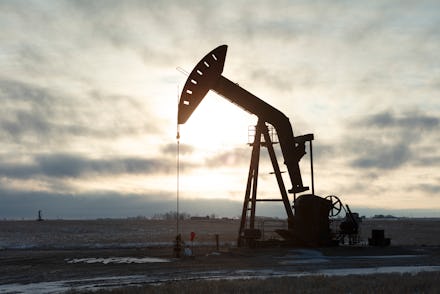The fracking boom is ending, but its environmental impact is far from over

Throughout the mid-2000s, the controversial fracking boom in the United States upended the global energy industry. America went from one of the world's largest importers of foreign oil to the world’s largest producer of natural gas and crude oil over the course of just one decade. The supposed energy independence, which the Trump administration and its supporters have touted as a major driver of economic growth that started long before Trump took office, was supposed to free the country of its reliance on foreign oil. But American oil prices are still largely tied to the global market, and the recent pandemic has caused the fracking boom to go bust, according to the New York Times.
Demand for oil and natural gas has taken a nosedive, and oil producers are racing to provide the lowest prices possible. In April, American oil producers were offering oil contracts at a price of negative $37.63 per barrel, meaning they were literally paying people to take their oil.
Now, drillers who have spent the last few decades cracking rocks and bringing fossil fuel deposits to the surface are going bankrupt. Whiting Petroleum sought bankruptcy protection in April, as did Diamond Offshore Drilling. Chesapeake Energy, one of the pioneers of the fracking revolution, declared bankruptcy in June. As all of these companies seek to reorganize after getting shellacked by the pandemic, they've spent millions of dollars in cash bonuses to reward their executives while essentially abandoning the wells that they profited off of, leaving the potential for an environmental disaster.
A blueprint for the fallout had already played out in Texas, where oil producer MDC Energy declared bankruptcy in November 2019. On the way out the door, the CEO of the failing company, Mark Siffin, collected $8.5 million as the company was in the process of going under. Meanwhile, the company's infrastructure was in the process of causing a crisis. A tank at one of its now unattended wells began leaking methane. A complaint about the issue was filed in December, and records from the Texas Commission on Environmental Quality show that, as of last week, it has yet to be addressed. According to the New York Times, addressing the leak and performing clean up in the surrounding area would cost the company $40 million. The reeling company's debts already exceed the value of its assets by more than $180 million, meaning there is little financial motivation for the issue to be addressed.
The same trend is already starting to occur with the former fracking powerhouses, and the results might be devastating to the environment. As Chesapeake Energy went under, it paid out $25 million in bonuses to its executives. Whiting Petroleum slid its leadership nearly $15 million in cash payouts just six days before declaring bankruptcy. Diamond Offshore Drilling got itself a $9.7 million tax refund under the Covid-19 stimulus bill, otherwise known as the CARES Act. It then turned around and approved payouts to executives for exactly that $9.7 million figure.
While the leaders of these failing ventures eject from their operations with golden parachutes, their companies leave behind unattended rigs that could start flooding the planet with harmful greenhouse gases. A recent study published in the journal Science Advances found that America's biggest oil fields release methane at twice the rate previously estimated. The issue has likely been exacerbated by the Trump administration's ongoing rollback of environmental protections, including policies that allow for more pollution from energy plants and open up more federal lands for drilling, relaxing requirements to address methane leaks, and eliminating requirements that companies account for the cost of removing a rig after drilling. The decrease in demand for oil and natural gas has already led to flaring and venting, which is the intentional release of excess gas. That is likely to continue, and unintentional releases like those plaguing MDC Energy's wells are also prone to happen as companies go under.
While these companies are supposed to set aside cash to deal with damage and restore sites of wells, most don't. Earlier this year, a study published by the California Council on Science and Technology found that taxpayers in the state could be on the hook for as much as $550 million in expenses to plug abandoned wells left by oil and gas companies that have gone belly up.
Prior to the latest flood of bankruptcies in the energy sector, there were already more than three million abandoned oil and gas wells. About two million of those wells are unplugged, meaning they are likely leaking methane. According to a report from Reuters, there are about 6.5 million metric tons of methane being released into the atmosphere each year by these wells. That's the equivalent of adding 1.5 million cars on the road to the country every year. The situation seems destined to get worse as more companies go under and leave a mess of abandoned drilling sites behind. As the methane leaks punish the planet, the executives who failed to navigate the changing economy get rewarded, and that outcome seems to be just fine in the eyes of the Trump administration.